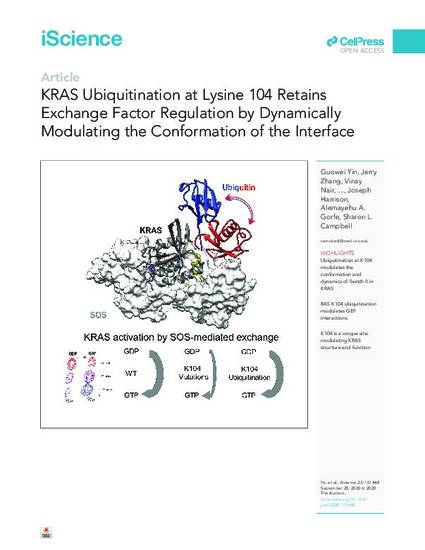
RAS proteins function as highly regulated molecular switches that control cellular growth. In addition to regulatory proteins, RAS undergoes a number of posttranslational modifications (PTMs) that regulate its activity. Lysine 104, a hot spot for multiple PTMs, is a highly conserved residue that forms key interactions that stabilize the RAS helix-2(H2)/helix-3(H3) interface. Mutation at 104 attenuates interaction with guanine nucleotide exchange factors (GEFs), whereas ubiquitination at lysine 104 retains GEF regulation. To elucidate how ubiquitination modulates RAS function, we generated monoubiquitinated KRAS at 104 using chemical biology approaches and conducted biochemical, NMR, and computational analyses. We find that ubiquitination promotes a new dynamic interaction network and alters RAS conformational dynamics to retain GEF function. These findings reveal a mechanism by which ubiquitination can regulate protein function.
Available at: http://works.bepress.com/joseph-harrison/45/
